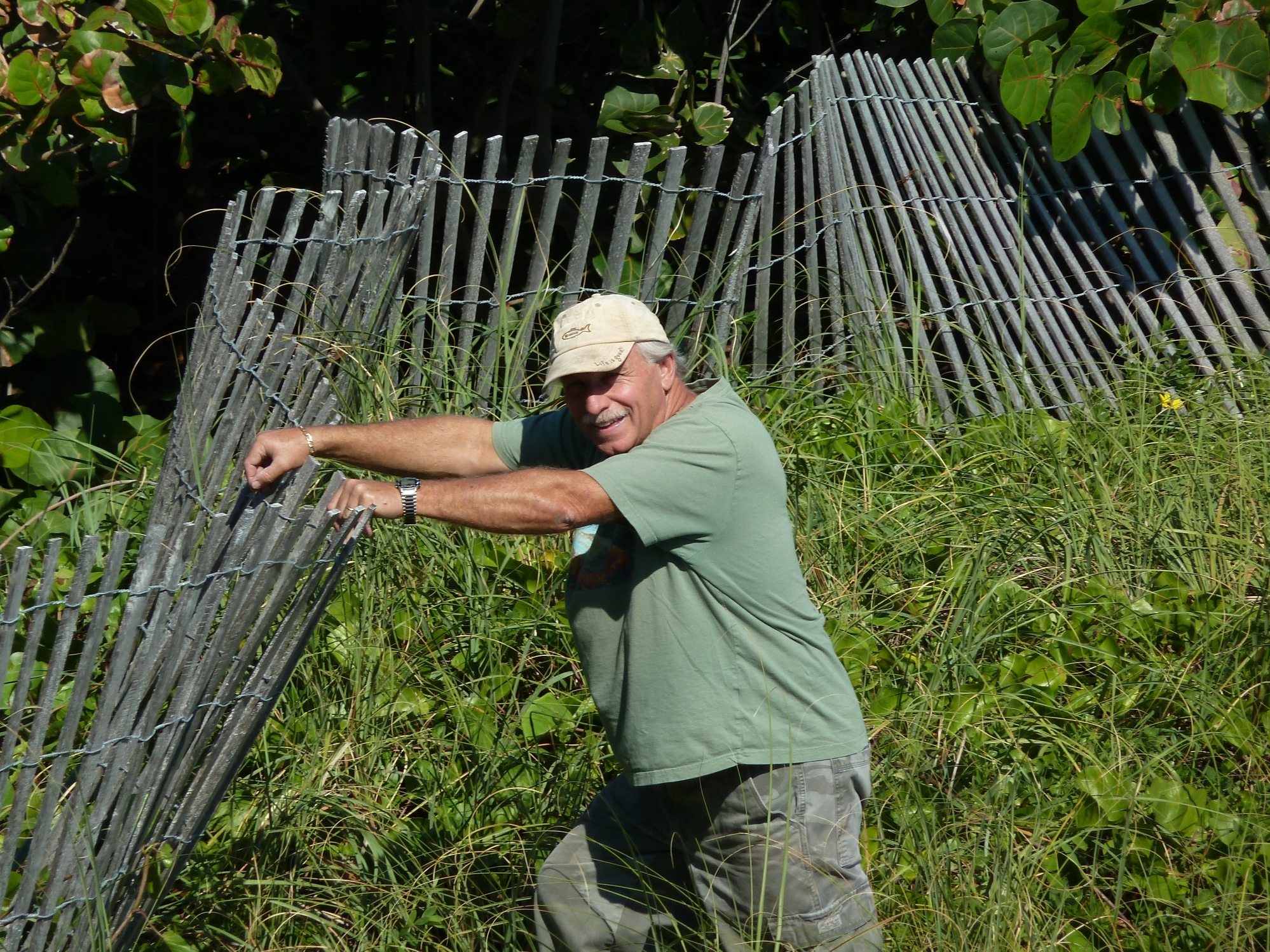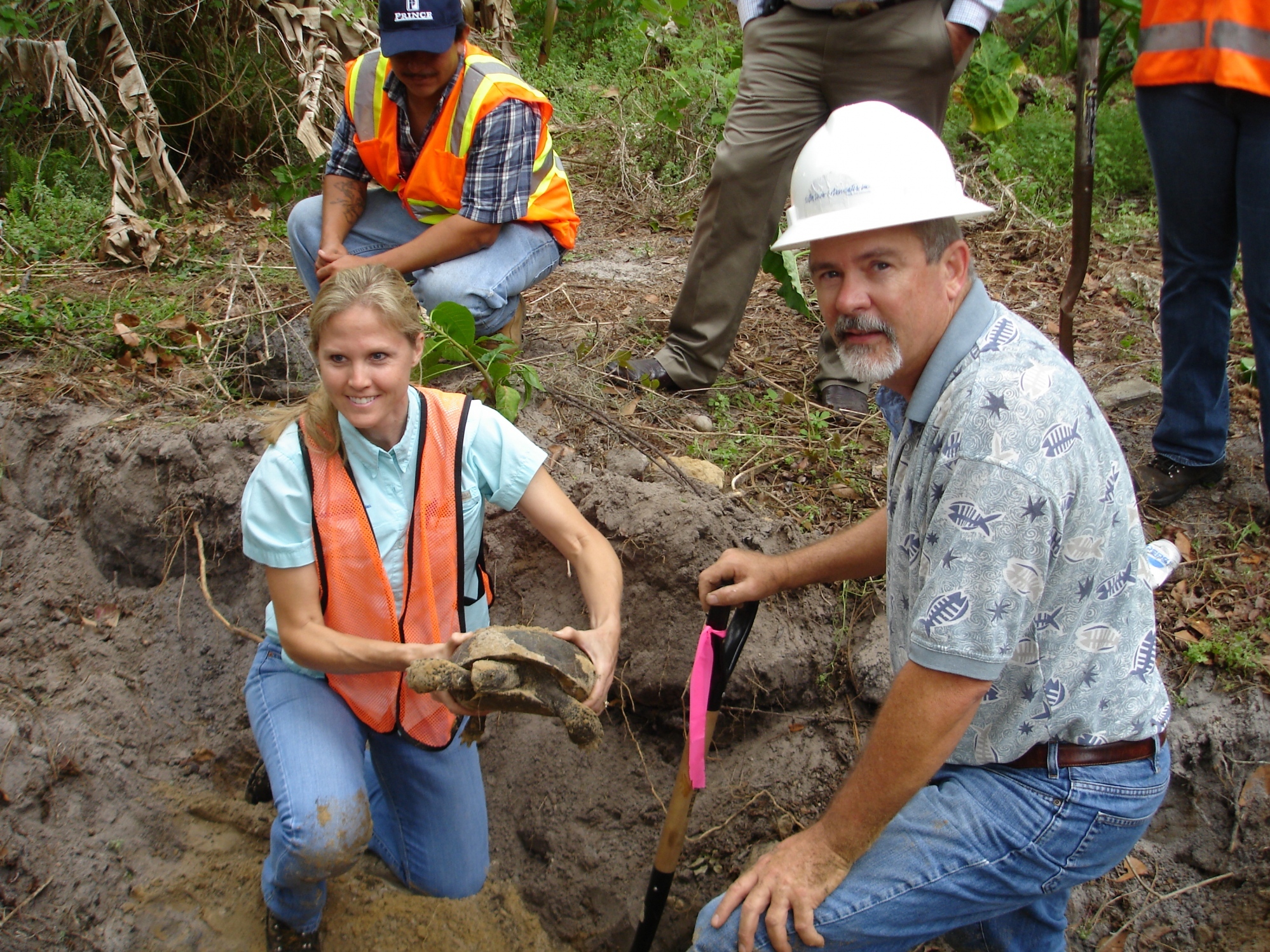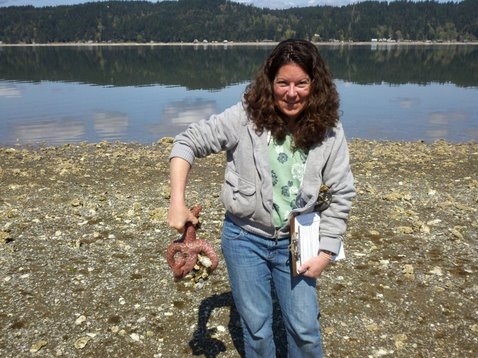CEP In Action
CEP In Action Corry Platt Playing in the mud
Playing in the mudCorry Platt, CEP since 2002, works on sediments-related projects across North America. He deals with contaminated, polluted, and clean sediment along with the ecological impacts and practical construction-phase realities. He is the technical lead on the Black River Dredged Material Reuse Facility in Ohio where he's striving for beneficial reuse solutions to the prohibition on open lake disposal in Lake Erie. The leading project objective is to identify cost-efficient methods to dewater dredged sediments making them suitable for incorporation into the recycled soil market - "making spoil into soil." The project is funded through a Healthy Lake Erie grant to the City of Lorain by the Ohio Department of Natural Resources and the Ohio Environmental Protection Agency. Building upon bench tests, an innovative technology pilot study is underway assessing the function of a GeoPool, which he describes as a one-acre above ground swimming pool with a filter fabric liner. Balancing dredge production rates and slurry delivery, polymer dosing, clarified water quality, dewatering and solids consolidation, and residual solids texture, strength, chemical and nutrient concentrations, and invasive plant seed abundances are being tracked as the pilot occurs.
Member ProfileName: Corry Platt, CEP
Title: Director - Sediments, Coastal & Brownfield Restoration
CEP Since: March 2002
Functional Area: Environmental Documentation
Company: Coldwater Consulting
Location: Raleigh-Durham, North Carolina
Expertise: Sediments, Water Quality, Permitting/Regulatory, Construction
On the Importance of Being a CEPMy CEP credential enabled me to initially receive a promotion, served as assurance to obtain professional liablity insurance coverage when I was independent, facilitated teaming opportunities with fellow CEPs, substantiated my KSAs when working in legal proceedings, and provides me ongoing pride from the peer-reviewed endorsement of my KSAs. Being active in ABCEP has broadened my horizons, network, and awe of the inspiring work of our peers.
CEP In Action Elizabeth Johnson Lead the Environmental Land Stewardship Program
Lead the Environmental Land Stewardship ProgramElizabeth Johnson, CEP since 2007, worked on the Environmental Land Stewardship Program (ELSP) in Orange County Florida. The ELSP applies to an area of land located in southeast Orange County which is about 33,000 acres in size, and is known as the Innovation Way Overlay. The geographical area of the area is generally bounded by State Road 417 on the west, State Road 528 on the north, the Econlockhatchee River on the east, and the Osceola County line on the south. This land area is designated primarily for rural use in the Future Land Use Element and the Future Land Use Map of the Comprehensive Plan. This means that only one house per ten acres could be built.
In 2005, Orange County Mayor Richard Crotty proposed the vision of a regional high-technology corridor linking the University of Central Florida to the Orlando International Airport.
This high technology corridor concept, vital to the economic growth of the greater Orlando metropolitan area and diversification of the region's economic and employment base, requires higher development densities and intensities than can be accomplished with the rural future land uses that were designated for the Innovation Way Overlay.
Although greater density and intensity of development is necessary to achieve the economic goals of the high technology regional corridor, there are substantial areas of ecologically important lands located within the Innovation Way Overlay, and the need for economic diversification and development must be balanced with the protection of the environment.
The vision for the Innovation Way Overlay incorporates the high technology corridor concept and includes protection of ecologically important lands. This balancing of high technology/high value economic development with environmental protection requires innovative urban form, multimodal transportation concepts and infrastructure, and sustainable development practices.
The primary purpose of the ELSP is to provide protection for the area's environmental resources while allowing opportunities for sustainable economic development.
Member ProfileName: Elizabeth Johnson, CEP
Title: Environmental Programs Administrator
CEP Since: June 2007
Functional Area: Environmental Documentation
Company: Orange County Government
Location: Orlando Florida
Expertise: Wetlands Regulations, Water Quality
On the Importance of Being a CEPBeing part of ABCEP and a CEP has provided me with professional growth opportunities that otherwise may have not been presented.
CEP In Action Donald Richardson, PhD Spanish River Dune Restoration Project
Spanish River Dune Restoration ProjectSpanish River Dune Restoration project is located in Boca Raton, Florida. The city wanted to prune the existing vegetation to provide a view of the ocean for residents and tourists. Aspects of the project included the removal of all exotic and nuisance vegetation from all of the view corridors along the beach. All remediated corridors were planted with native dune species and will be maintained and monitored for FDEP for a period of five years. Special care was taken to reduce light sources along the corridors in order to minimize sea turtle nesting along the beach. Project Partners: Laurie Milam, Principal of Florida Natives Nursery, Inc., and Vladimir Foursa, Principal of BG Katz, Inc.
Member ProfileName: Donald Richardson, CEP
Title: President/Owner
CEP Since: 2006
Functional Area: Environmental Assessment
Company: Ecological Consultants, Inc.
Location: Tampa, Florida
Expertise: Plant Ecology, Wetland Surveys, Listed Species Surveys, Land Management, Habitat Creation
On the Importance of Being a CEPThe CEP certification allows me to provide some level of comfort to the FDOT for submittal of landscape reports. It also adds another level of certification on top of my Ph.D. for clients and agencies that require a certification entity for selected projects. It will benefit my company as a whole during the bidding process for state and federal jobs. It adds another layer of professionalism to my credentials
CEP In Action Bruce Hasbrouck Leading the field crew for the Gopher Tortoise Removal Project
Leading the field crew for the Gopher Tortoise Removal Project
Member ProfileName: Bruce Hasbrouck, CEP
Title: Environmental Services Director
CEP Since: 2006
Functional Area: Environmental Documentation
Company: Faller Davis & Associates, Inc.
Location: Tampa, Florida
Expertise: Wetlands, Wildlife
On the Importance of Being a CEPGaining recognition for achieving a high level of ethics and competency in my profession.
CEP In Action Elizabeth Ellis On the Job - Washington Coastal Observation Surveys
On the Job - Washington Coastal Observation SurveysElizabeth Ellis, CEP Co-Lead the Washington Coastal Zone Management Pilot Project. She is an active volunteer and conducts surveys for the Coastal Observation and Seabird Observation Survey (COASST) in Washington State.
Washington Coastal Zone Management Pilot Project, Olympia Washington- Department of Natural Resources (DNR) participation in the Washington Coastal Zone Management Pilot project. For over a year, DNR has been participating with the State Ecology and Washington Department of Fish and Wildlife agencies in a CZM pilot program. The current CZM Program for Washington state is run by Ecology and the six enforceable policies do not represent any DNR laws or statutes. The role of DNR in this pilot is to review projects, see if they are on state-owned aquatic land, provide any comments if needed, and coordinate with Ecology and Washington Department of Fish and Wildlife if necessary through the determination of federal consistency.
Member ProfileName: Elizabeth (Liz) Ellis, CEP
Title: Environmental Planner
CEP Since: 2010
Functional Area: Environmental Planning
Company: Washington Dept. of Natural Resources, Aquatic Resources Program, Policy Unit
Location: Olympia, Washington
Expertise: NEPA/SEPA, FERC, environmental permitting, natural resource management, T&E species, harbor areas
On the Importance of Being a CEPI have worked hard to develop a combination of
competitive and professional-level education and experience spanning nearly two decades working with state and federal government agencies. Becoming certified by a panel of my peers validates this effort. It is the icing on the cake.
CEP In Action Heidi Pruess Lead the State of the Environment Report, Mecklenburg County, NC Project
Lead the State of the Environment Report, Mecklenburg County, NC ProjectMecklenburg County produces a State of the Environment Report biennially. The State of the Environment Report (SOER) has been produced since 1987, initiated as a description of data results. Evolving the SOER to provide data trends and recommendations has been possible due to the cooperation of numerous department staff and the integration of outcome oriented communications. The SOER is a tool for understanding our environmental condition while identifying strategies for ensuring that we have clean air to breathe, clean water to drink, and healthy land on which to live and recreate. We have taken the opportunity, through the SOER, to encourage involvement from our residents and local officials to become a part of helping to make Mecklenburg County a Sustainable Community. In my role as editor of the SOER, I have been able to utilize my network of CEP peers as resources in making this report a successful asset for the Mecklenburg County community.
Member ProfileName: Heidi Pruess, CEP
Title: Environmental Policy Administrator
CEP Since: 2006
Functional Area: Environmental Operations
Company: Mecklenburg County, Land Use and Environmental Services
Location: Charlotte, NC
Expertise: Environmental Sustainability
On the Importance of Being a CEPCredible credentialing for environmental professionals in the area of Sustainability is a scarce and valuable asset. Employers seeking to be the best and truly set themselves apart from others will seek out credentialed professionals to be on their staff. Being a CEP has afforded me with a strong code of ethics and credible credential that has ably matched my work with those employers that are seeking the same.





